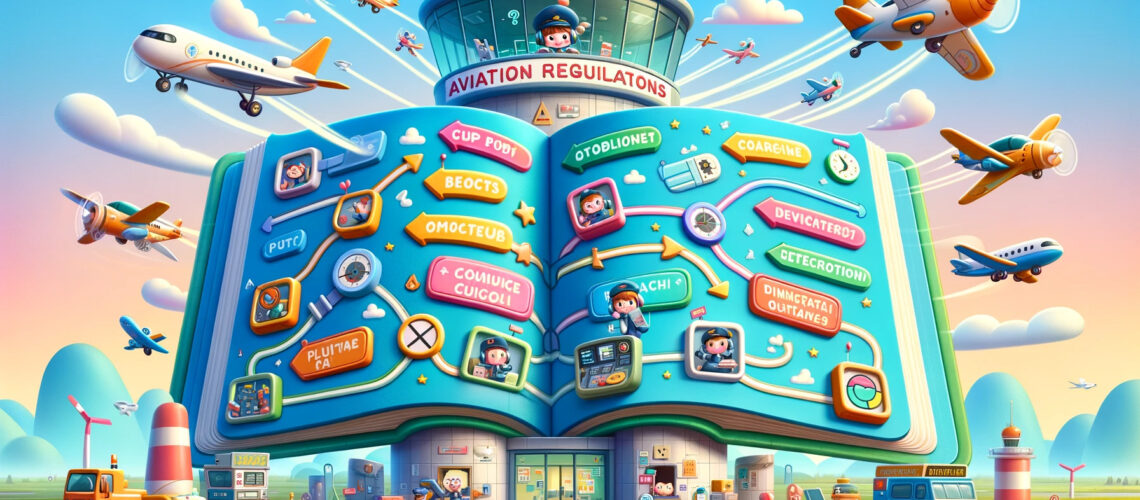In the aftermath of the recent Alaska Airlines Boeing 737 Max 9 incident, where a door plug was lost mid-flight, the spotlight has turned to aviation regulatory bodies and their crucial role in ensuring the safety and integrity of aircraft operations. This event has raised pertinent questions about current regulatory standards and the need for enhancements to address the challenges posed by modern aviation technologies. Experts in the field, including seasoned pilot Ramin Pourteymour, emphasize the importance of robust regulatory frameworks in maintaining and improving aviation safety.
The Role of Regulatory Bodies in Aviation Safety
Aviation regulatory bodies like the Federal Aviation Administration (FAA) in the United States are tasked with the critical responsibility of overseeing all aspects of civil aviation, including aircraft design, operation, maintenance, and training standards. These organizations establish regulations and guidelines that ensure the safety of passengers, crew, and aircraft. In response to incidents like the Boeing 737 Max 9, they are often called upon to re-evaluate and update these standards to reflect new learnings and technological advancements.
Immediate Response and Investigation
Following the door plug incident, the FAA’s immediate grounding of 737 Max 9 planes with similar configurations was a decisive action that underscored the agency’s commitment to safety. This quick response provided a window for thorough investigation and inspection, preventing potential further incidents. Regulatory bodies work closely with national transportation safety boards and airlines to investigate and identify the root causes of such events. Their findings are crucial in shaping future safety regulations and practices.
Enhancing Inspection and Maintenance Regulations
One key area of focus is the inspection and maintenance protocols for aircraft. Regulatory bodies are now examining whether current standards are sufficient for detecting issues, especially in less-obvious components like door plugs. There is a growing consensus among experts, including Ramin Pourteymour, that regulations need to evolve to incorporate more advanced technological solutions like predictive analytics and digital monitoring systems, which can provide early warnings of potential problems.
Updating Training and Certification Requirements
The incident also highlights the need for updated training and certification requirements for pilots and maintenance personnel. As aircraft become more technologically advanced, regulatory bodies must ensure that training programs keep pace, equipping aviation professionals with the necessary skills and knowledge to operate and maintain modern aircraft safely. This includes simulation-based training for emergency scenarios, as well as education on new technologies and systems.
Global Harmonization of Aviation Regulations
Aviation is a global industry, and incidents like the Boeing 737 Max 9 highlight the need for international regulatory harmonization. Different countries having disparate safety standards can lead to inconsistencies and complications in international air travel. Regulatory bodies across the globe must work together to establish and adhere to unified safety standards, ensuring consistent safety protocols for airlines operating internationally.
Forward-Looking Regulatory Approaches
Looking to the future, aviation regulators are also tasked with anticipating and preparing for emerging technologies and trends. This proactive approach involves not only adapting current regulations to new technologies but also foreseeing potential safety challenges and addressing them through early regulatory interventions. Forward-looking strategies are essential in an industry that is continually evolving with advancements in technology and changes in global travel patterns.
Conclusion
The recent Boeing 737 Max 9 incident serves as a critical reminder of the importance of stringent and adaptive aviation regulations. Regulatory bodies play a vital role in ensuring the safety of air travel, and their ability to respond quickly, investigate thoroughly, and update regulations proactively is key to maintaining public trust in air travel. As aviation continues to advance, the insights and experiences of experts like Ramin Pourteymour will be invaluable in guiding regulatory approaches that keep pace with these changes, ensuring that the skies remain safe for all.

